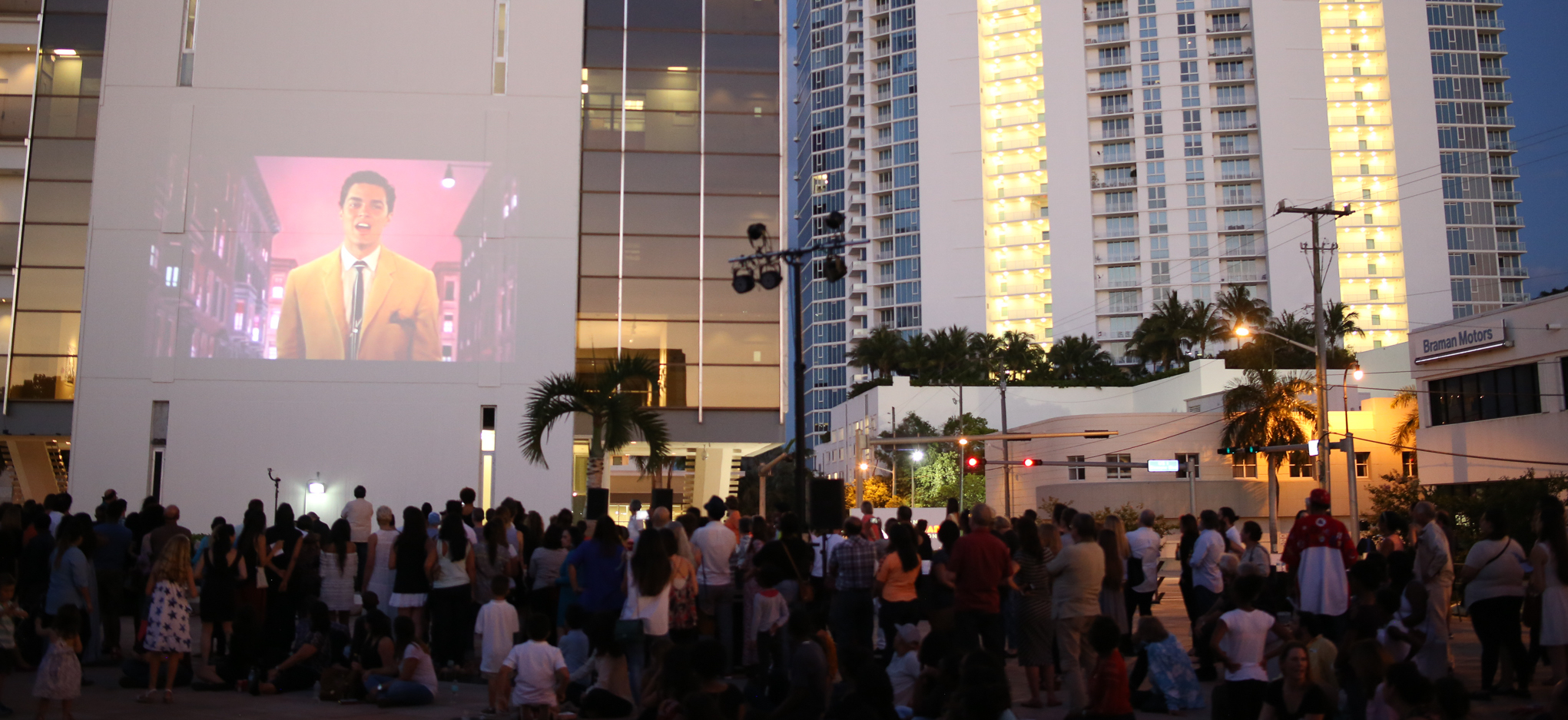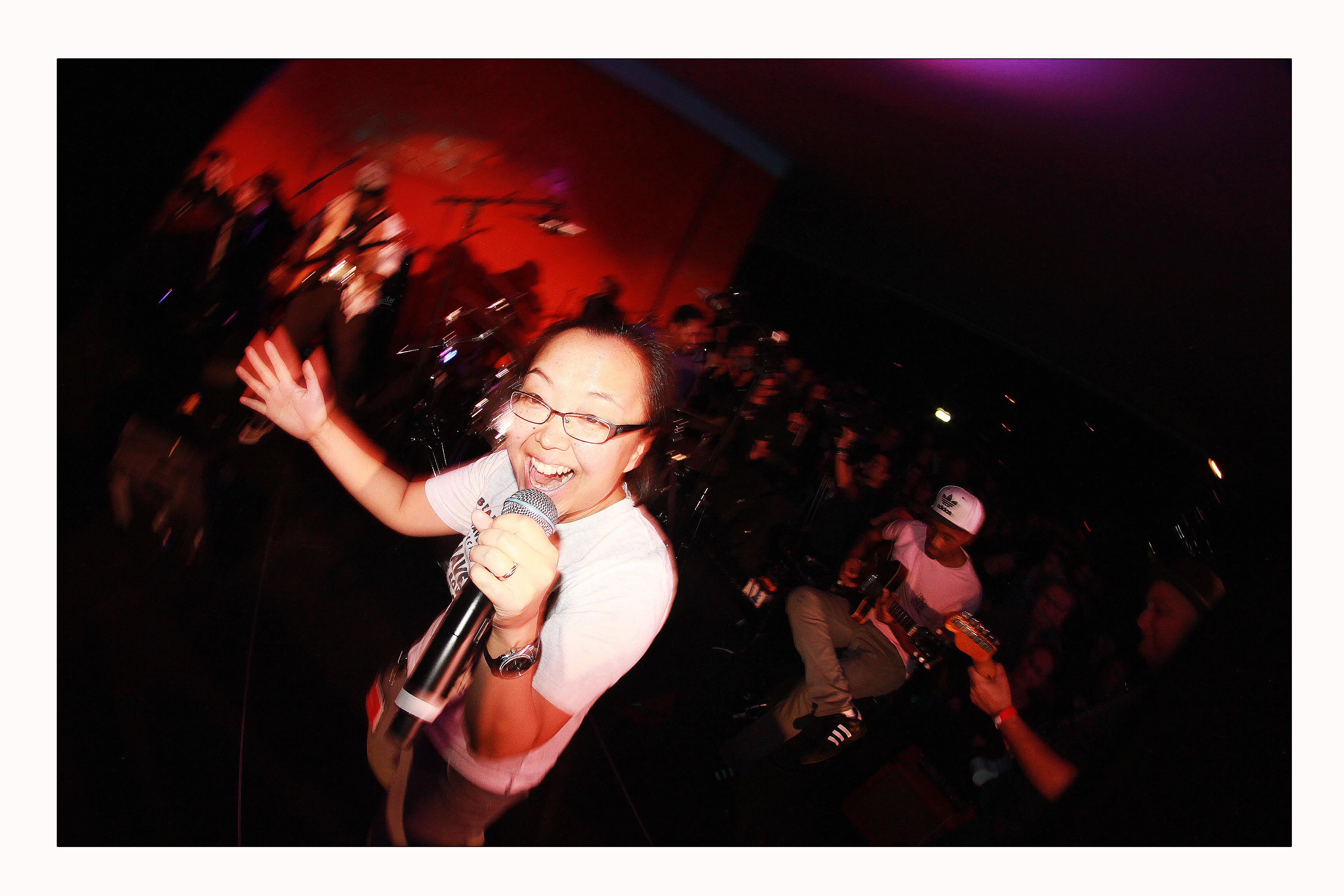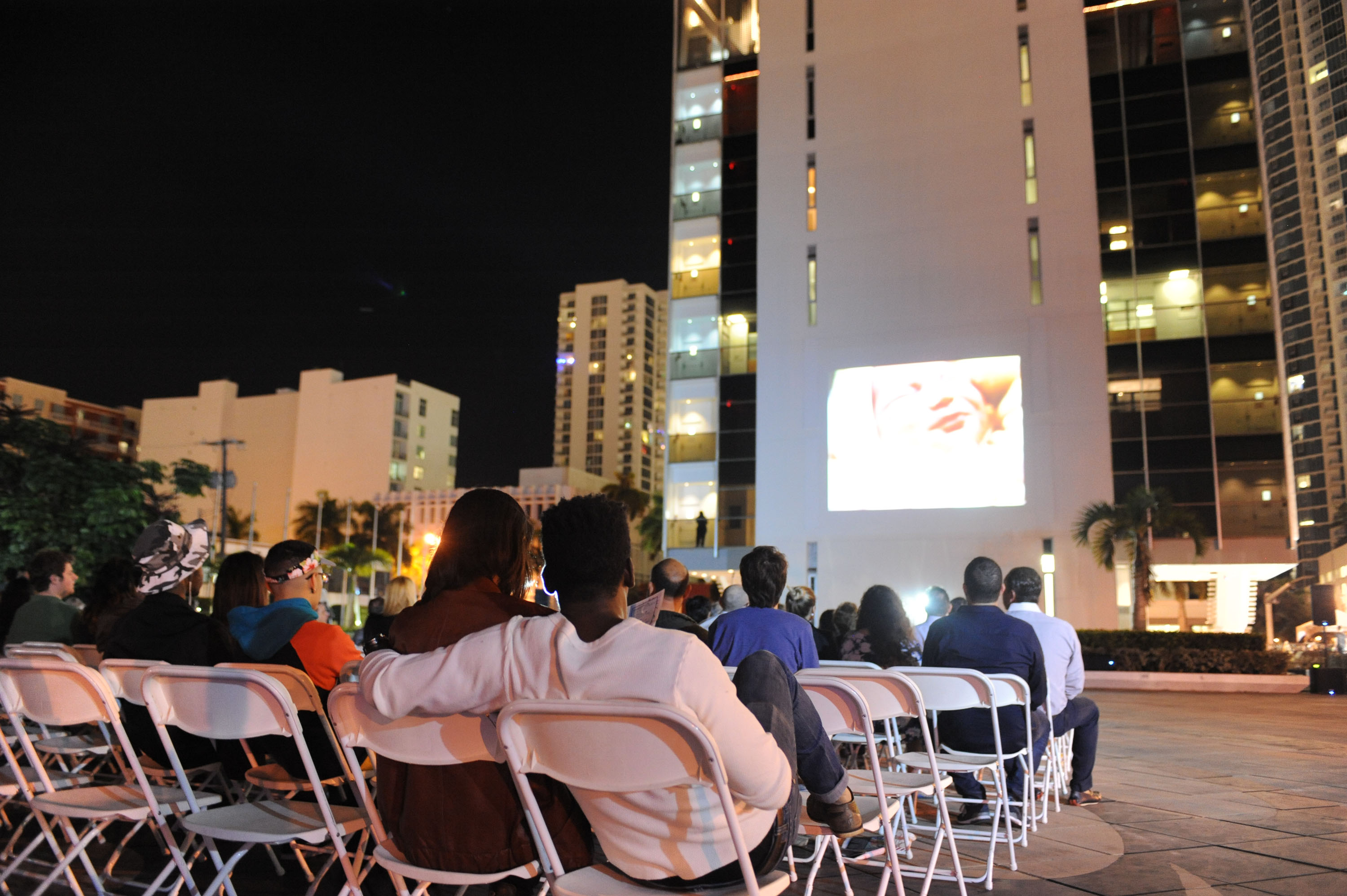
Miami, meet the woman proving arts programming can be ‘cool and extraordinarily diverse’
Above: A YoungArts event. Photo by Jean Carlos Ramirez. All event photos courtesy of YoungArts.
Creating arts programming that represents the breadth and diversity of our culture can be a challenge. For Esther Park, who oversees campus programming at YoungArts (a Knight Arts grantee), this skill seems to come naturally. In some ways, Park’s previous life as an “odd-ball chubby Asian nerd” in high school informs her inclusive programming agenda, where marginalized and stigmatized communities aren’t afterthoughts. Park’s ongoing work has revealed just how possible it is to program really cool and extraordinarily diverse stuff–not as an ad hoc reaction to check off a mandatory bullet point, but as a centerpiece for the revival of the YoungArts campus, as well as the local cultural renaissance it has sparked. Who is Esther Park? I ask that question to myself every day. Hopefully, the answer to this would be someone who’s a cool, hard-working, down-to-earth, funny human being that loves cats, loves nice people and loves doing what she does every damn day. Oh, and follow me on Instagram, @parkesta (#followforfollow, #hashtaggamestrong, #hashtag).

Esther Park. Photo by Joel Meinholz. Why are you so awesome? And what are your favorite breakfast and TV or Netflix shows? Why is this question even more awesome?! I don’t do breakfast, nor TV. I did, however, binge-watch “Mozart in the Jungle” on Amazon Prime a few months back. It’s probably because I did classical piano for 11 years, and the show brought me back to my nerd-days of geeking out on Chopin vs. Rachmaninoff (obviously Chopin, by far!). You’ve turned the YoungArts Campus into a thriving center for culture in Miami–but a culture that is inclusive, fun and contemporary. The Outside the Box series has brought various art forms together, such as jazz and skateboarding. What are your inspirations, history, interests–all the stuff that informs your programming decisions? I’ve always been fascinated by subcultures; [things that are] marginalized and often times “written-off” that eventually make it out into the mainstream. Whether that’s growing up going to punk shows or listening to hip-hop or hitting up underground raves during high school, all that formed my identity into who I am today. My main reason for why I was so interested in the subterranean is mainly because of me being the odd-ball chubby Asian nerd in school. Being ostracized was the best thing to ever happen to me in those early adolescent years. It gave me countless hours discovering Charles Bukowski, Jack Kerouac, Nam June Paik, Billie Holiday, Fugazi, KRS-One, etc.

An alumni performance for YoungArts’ Outside the Box series, which is curated by Park. Photo by Jason Koerner. What do you hope to accomplish long-term with YoungArts programming? [My] long-term vision for YoungArts programming is that we serve as a genesis for so many new and engaging works across all artistic disciplines. We want the arts community to seek YoungArts as this fertile crescent of futurism–of works that have never been done before; of works that are constantly changing and shifting with the elements of time, space, audience. YoungArts’ core mission is to identify and nurture the most accomplished young artists–with that bountifulness of talent, we have the opportunity to showcase art that people 20-30 years from now will still be talking about. You’ve made several comments in the past about lack of diversity in the arts. How can we as a community and you as a programming director impact culture to create arts programming that is more representative? Well, one of the core issues of the lack of diversity is, honestly, who’s dictating the programming. It’s just that simple. Usually, what takes place on stage or on the gallery walls are a direct reflection of the individual who holds the power to present it. That power structure in what I call “old-guard art administration” is the very same power structure you see in politics, in finance, in every major organized industry. Being able to break through these old-guard mentalities where you have a place to present your voice is very important. You want more diverse programming? Maybe you should hire more diverse people in your organization. Of course, there are people of power who champion the voices of the voiceless, but… if you want to open a Chinese restaurant, maybe you should consult with a Chinese chef. Same goes for diversity in programming. You want to curate an all-women hip-hop music festival? Probably smart to hire a female festival director that loves and lives hip-hop culture. There’s this thing that happens now and then: Well-intentioned arts organizations program events, workshops, talks at local schools (many labeled as ‘disadvantaged’ schools). When the program ends, it ends. How do we create more sustainable and substantive arts-and-culture programming that doesn’t just bring the arts to these communities on occasion, but encourages these communities–the kids, parents, stakeholders–to participate and join the creative economy? That’s a loaded question with a very loaded answer. How does one engage people of a disadvantaged community into being stakeholders of the creative class? For one, read my answer above. You might want to bring leaders in those communities to help shape the programming. Instead of carpet-bagging workshops that can move from city to city, workshops should actually facilitate the day-to-day lives of the folks who live in these communities. If people find value in something, they will find a way to keep it. A lot of these programs that go into these “underprivileged neighborhoods” are only a Band-Aid to the daily struggles of paying rent, holding a decent job, keeping children safe from random violence, etc. The best thing we, the so-called “privileged class,” can do is figure out programs that not only inspire the folks who attend these [events], but give them real-life skillsets that they can use to move them forward. I believe we call that Art in Social Practice. (Shout-out to Theaster Gates!) So that really cool graphic design workshop that you brought into XYZ school in the hood? Maybe you should incorporate computer programming and offer lessons in Photoshop. Give them college and career options, internship programs; offer them lessons in how to build a website for their new music project. But most importantly, follow through. Half of the program is the actual program itself; the other half is the connections and the relationships you build among the participants and the instructors, presenters, curators. Those are the things that leave the lasting impact.
One of my artistic mentors, Kristy Edmunds, once told me what the Latin term “curate” meant: care/protector of the soul. So when you curate an exhibition or you curate a festival or you curate an outreach program, you are not only caring for the soul of the artist, but also caring for the soul of your audience. Taking that to heart, you realize the responsibility one has when someone does a program in a particular community. You are caring for the soul of this community. Marinate on that one.

A film event on the YoungArts campus.
Money question: If you could invest a substantial sum of money in one project to serve the community, what would it be and why would you want it? This has nothing to do with the arts, but I would love to see organic, sustainable farming in underserved communities, and [to] teach the residents of these communities about healthy lifestyle. Health is wealth. You are what you eat. You can go see the most beautiful ballet at the Arsht Center, but if you are physically feeling miserable, sometimes that trumps any beauty that comes into your life. Eating is an art form. We should reevaluate how we grow, present, consume and share food. I believe that eating right will give a person the quickest and most easily visible results. You physically look and feel better! Once you look and feel better, you gain more confidence and self-esteem. Once you have more confidence and self-esteem, you are more likely to be in a position to achieve more, set higher goals, seek new opportunities. Once you hit all those–then, well, the sky is the limit, my friend. What’s next for YoungArts programming? Our next Outside the Box is slated for Saturday, June 4th. We’ve got YoungArts master teacher Jay Scheib directing a live opera, a modern-Miami version of “Carmen” set throughout the YoungArts campus involving a cast of our amazing YoungArts alums, a little league football team, and lots of rum. This is a work-in-progress that’s never been done before–Miami is once again in for a once-in-a-lifetime artistic experience!
Recent Content
-
Artsarticle ·
-
Artsarticle ·
-
Artsarticle ·
